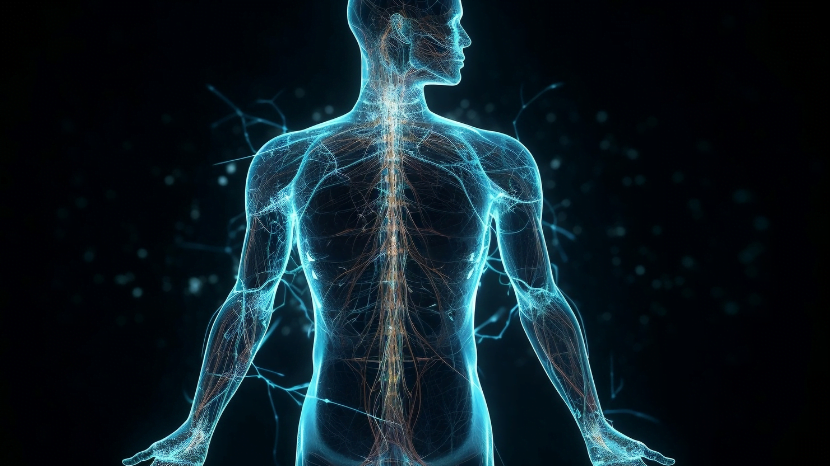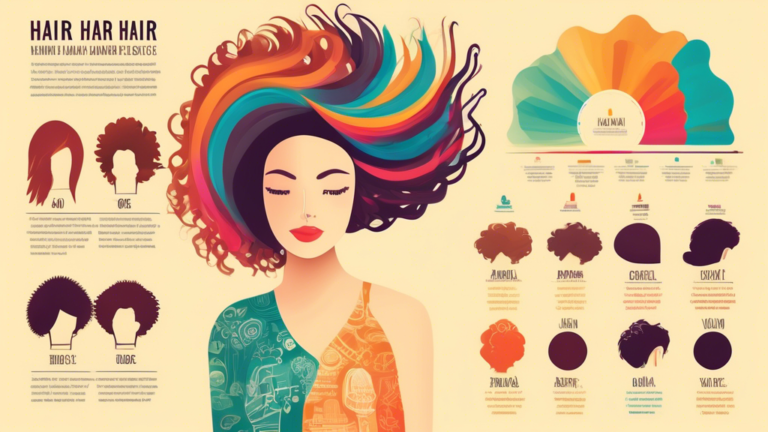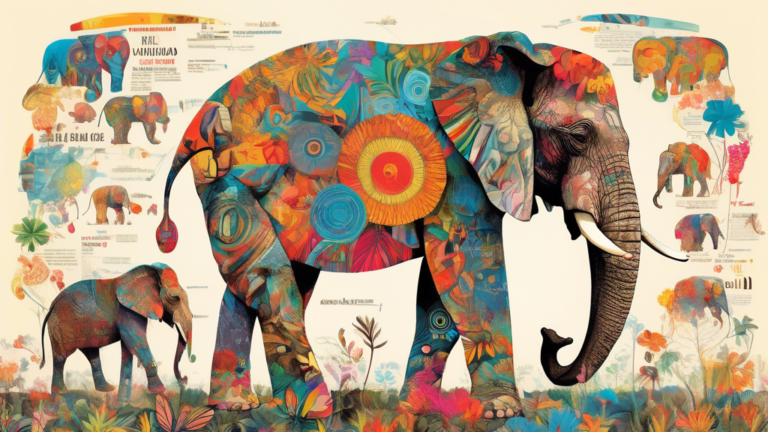100 Facts About the Human Body
The human body is a marvel of nature, a complex and intricate system that continues to astonish and baffle the scientific community. From the microscopic cells that form the building blocks of our body to the intricate network of nerves that transmit signals at lightning speed, every aspect of the human body is a testament to the wonders of evolution. In this article, we will explore 100 fascinating facts about the human body, unraveling the mysteries and wonders that lie within us. Let’s embark on this enlightening journey.
Fact 1: The Complexity of the Human Brain
The human brain is a marvel of biological engineering, housing approximately 86 billion neurons. These neurons form intricate networks, facilitating complex thought processes, memory storage, and control over various bodily functions. It’s a powerhouse of creativity, logic, and emotion, making us the unique individuals we are.
Fact 2: The Miracle of Human Eyes
Human eyes are capable of distinguishing around 10 million different colors. This incredible range allows us to appreciate the vibrant world around us in all its glory, from the subtle hues of a sunset to the rich palette of a blooming garden.
Fact 3: The Strength of Human Hair
A single strand of human hair can support up to 100 grams in weight. This means that a whole head of hair could potentially support the weight of two elephants. Despite its fine appearance, hair is incredibly strong and durable.
Fact 4: The Regenerative Power of the Liver
The liver has a remarkable ability to regenerate itself. Even if 75% of the liver is removed, it can regrow back to its full size. This regenerative property is vital in keeping our body detoxified and functioning optimally.
Fact 5: The Length of Blood Vessels
If laid end to end, the blood vessels in the human body would stretch for about 100,000 kilometers, enough to encircle the Earth more than twice. This extensive network ensures the efficient transportation of nutrients and oxygen to every cell in the body.
Fact 6: The Durability of Teeth
Human teeth are as strong as rocks. The enamel that covers the teeth is the hardest substance in the human body, providing protection and strength to tackle a variety of foods, from crunchy apples to tough meat.
Fact 7: The Sensitivity of Fingertips
Our fingertips are incredibly sensitive, housing a dense network of nerve endings. This sensitivity allows us to feel the finest textures and grasp delicate objects with precision, enhancing our interaction with the world around us.
Fact 8: The Speed of Nerve Impulses
Nerve impulses travel at speeds of up to 120 meters per second, allowing for rapid communication between the brain and other parts of the body. This swift transmission of signals enables quick responses to external stimuli, safeguarding us from potential harm.
Fact 9: The Flexibility of Skin
The skin, our body’s largest organ, is remarkably flexible and resilient. It can stretch and retract, providing protection against environmental factors while accommodating growth and movement.

Fact 10: The Production of Saliva
Throughout our lifetime, the human body produces about 25,000 quarts of saliva, enough to fill two swimming pools. Saliva plays a crucial role in the initial stages of digestion and helps in keeping our mouth healthy.
Fact 11: The Complexity of the Human Ear
The human ear is a marvel of biological design, capable of detecting sounds in frequencies as low as 20 Hz to as high as 20,000 Hz. This wide range allows us to appreciate the rich diversity of sounds in our environment, from the gentle rustle of leaves to the vibrant notes of music.
Fact 12: The Efficiency of the Heart
The human heart is a tireless worker, beating about 100,000 times a day to pump blood throughout the body. This vital organ ensures the continuous flow of oxygen and nutrients to various tissues, sustaining life and promoting health.
Fact 13: The Unique Fingerprints
Each individual has a unique set of fingerprints, formed during the early stages of development in the womb. These patterns serve as a personal identifier, used in forensic science to distinguish between individuals.
Fact 14: The Density of Bones
Human bones are incredibly dense and strong, capable of supporting multiple times our body weight. Despite their rigidity, bones are living tissues that continually remodel and adapt to the stresses placed upon them.
Fact 15: The Abundance of Bacteria
The human body is home to trillions of bacteria, forming a complex ecosystem known as the microbiome. These microorganisms play a vital role in our health, aiding in digestion, immune responses, and even influencing our mood and behavior.
Fact 16: The Blinking of Eyes
On average, a person blinks about 15-20 times per minute. This involuntary action helps to keep the eyes moist and protected from dust and other irritants, ensuring clear and comfortable vision.
Fact 17: The Healing Power of Tears
Tears have a healing property, containing enzymes and antimicrobial proteins that help in fighting off infections. Apart from their protective role, tears also serve as an emotional outlet, often accompanying intense feelings of joy or sorrow.
Fact 18: The Expansion of Lungs
The lungs have a remarkable capacity to expand and contract, accommodating the influx of air during breathing. This vital organ, with its complex network of airways and blood vessels, facilitates the exchange of oxygen and carbon dioxide, sustaining life with each breath.
Fact 19: The Growth of Nails
Human nails continuously grow throughout our lives, at an average rate of 3 mm per month for fingernails and 1 mm per month for toenails. This growth is influenced by various factors, including age, nutrition, and genetics.
Fact 20: The Resilience of the Human Body
The human body is a marvel of resilience, capable of adapting to a wide range of environmental conditions and stresses. From the ability to heal wounds to the capacity to develop immunity against diseases, the body’s innate resilience is a testament to the wonders of human biology.
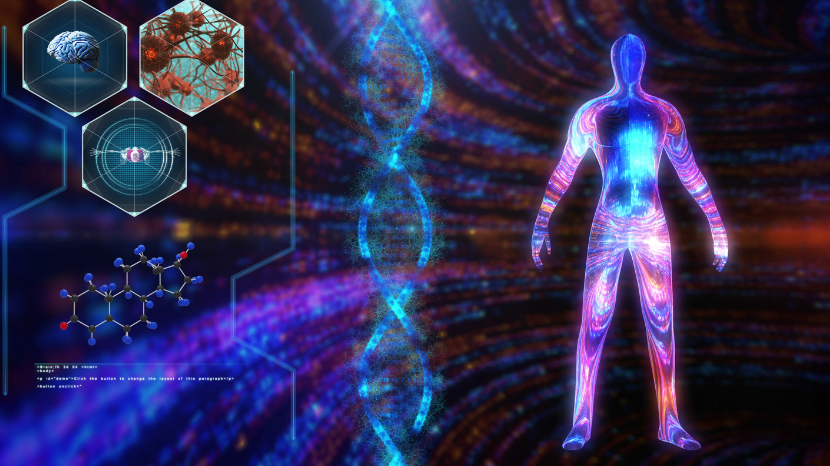
Fact 21: The Marvel of the Human Nose
The human nose is not only essential for breathing but also has an incredible ability to distinguish between one trillion different scents. This olfactory prowess helps us navigate the world, from enjoying the aroma of food to sensing potential dangers like smoke.
Fact 22: The Complexity of the Immune System
Our immune system is a complex network of cells, tissues, and organs working in harmony to defend the body against harmful pathogens. It has a remarkable memory, remembering previously encountered invaders and mounting a quicker response in subsequent encounters.
Fact 23: The Wonders of the Human Tongue
The human tongue is a muscular organ with a versatile range of functions, including tasting, swallowing, and articulating speech. It can identify five basic tastes: sweet, sour, salty, bitter, and umami, allowing us to enjoy the diverse flavors of food.
Fact 24: The Intricacy of the Human Hand
The human hand is a masterpiece of evolutionary engineering, comprising 27 bones, numerous muscles, and a network of nerves. This intricate design grants us a remarkable range of motion and dexterity, enabling us to perform complex tasks with precision.
Fact 25: The Phenomenon of Bioluminescence in Humans
Though not visible to the naked eye, humans emit a small amount of light, a phenomenon known as bioluminescence. This light emission is linked to the metabolic processes occurring within our bodies and varies throughout the day.
Fact 26: The Human Body’s Water Content
About 60% of the human body is made up of water. This vital fluid is essential for various bodily functions, including temperature regulation, waste elimination, and the transportation of nutrients and oxygen to cells.
Fact 27: The Role of the Appendix
Once considered a vestigial organ with no apparent function, recent research suggests that the appendix may serve as a reservoir for beneficial gut bacteria, helping to repopulate the intestines with healthy microbes after an illness.
Fact 28: The Human Body’s Electrical Conductivity
The human body is a good conductor of electricity due to the high water and electrolyte content in our tissues. This electrical conductivity is essential for the functioning of our nervous system, which relies on electrical signals to communicate between the brain and other body parts.
Fact 29: The Phenomenon of Goosebumps
Goosebumps occur as a response to cold or emotional stimuli, where tiny muscles at the base of hair follicles contract, causing the skin to pucker. This reaction is believed to be a vestigial reflex inherited from our animal ancestors, meant to increase warmth or make the creature appear larger.
Fact 30: The Lifespan of Red Blood Cells
Red blood cells have a lifespan of about 120 days. These cells, which lack a nucleus, are responsible for transporting oxygen from the lungs to various tissues and returning carbon dioxide to the lungs for exhalation.
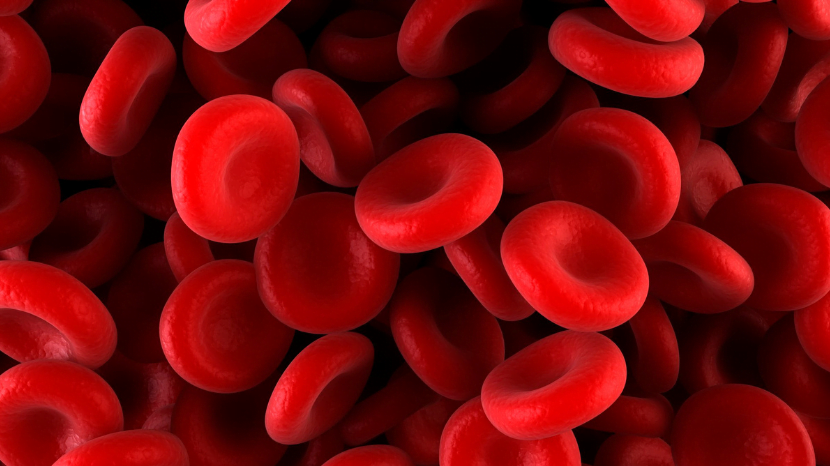
Fact 31: The Human Body’s pH Level
The human body maintains a slightly alkaline pH level of around 7.4. This pH level is crucial for the optimal functioning of cells and enzymes. Any significant deviation from this pH can lead to health issues.
Fact 32: The Healing Properties of Honey
Honey has been used since ancient times for its healing properties. It contains antibacterial and anti-inflammatory compounds, making it a natural remedy for wounds and burns. Its hygroscopic nature also helps in keeping the skin moisturized.
Fact 33: The Human Gut as a “Second Brain”
The human gut is often referred to as the “second brain” due to the presence of a complex network of neurons known as the enteric nervous system. This system communicates with the brain, influencing mood and behavior, and plays a vital role in digestion.
Fact 34: The Diversity of Human Microbiome
The human microbiome, comprising bacteria, viruses, and fungi, is incredibly diverse, with the composition varying between individuals. This microbiome plays a crucial role in our health, influencing everything from digestion to immune responses.
Fact 35: The Function of the Spleen
The spleen, an organ located in the upper left part of the abdomen, serves as a filter for blood, removing old red blood cells and recycling iron. It also plays a role in the immune system, helping to fight off infections.
Fact 36: The Human Body’s Radiator: The Forehead
The forehead acts as a natural radiator for the human body, helping to dissipate heat through a rich network of blood vessels present in this region. This is why we often feel the forehead to check for fever, as it reflects the body’s core temperature.
Fact 37: The Complexity of the Human Foot
The human foot is a complex structure comprising 26 bones, 33 joints, and over 100 muscles, tendons, and ligaments. This intricate design allows for a wide range of movements, from walking and running to dancing and jumping.
Fact 38: The Role of Melatonin in Sleep
Melatonin, a hormone produced by the pineal gland, plays a crucial role in regulating sleep-wake cycles. Its production is influenced by light exposure, increasing during the night to promote sleep and decreasing during the day to encourage wakefulness.
Fact 39: The Human Body’s Natural Clock: The Circadian Rhythm
The circadian rhythm is the human body’s natural clock, governing various physiological processes over a roughly 24-hour cycle. This rhythm influences sleep patterns, hormone release, and body temperature, helping to synchronize our biological functions with the day-night cycle.
Fact 40: The Wonders of Human Pregnancy
During pregnancy, the human body undergoes a series of remarkable changes to nurture and accommodate the developing fetus. This includes the growth of the placenta, a unique organ that facilitates the exchange of nutrients and oxygen between the mother and the baby.

Fact 41: The Human Body’s Ability to Adapt to Altitude
The human body has a remarkable ability to adapt to high altitudes. Over time, it can increase red blood cell production to improve oxygen delivery to tissues, helping individuals acclimate to environments with lower oxygen levels, such as mountainous regions.
Fact 42: The Mystery of Dreams
Dreams remain one of the most enigmatic phenomena of the human experience. While the exact purpose of dreaming is still a topic of research, it is believed to be associated with memory consolidation, problem-solving, and emotional processing.
Fact 43: The Complexity of the Human Spine
The human spine is a complex structure consisting of 33 vertebrae, cushioned by intervertebral discs that absorb shock and allow for flexibility. This column not only supports the upper body but also houses the spinal cord, a vital pathway for nerve signals.
Fact 44: The Human Body’s Largest Muscle
The largest muscle in the human body is the gluteus maximus, located in the buttocks. This muscle plays a crucial role in movements such as standing up from a sitting position, climbing stairs, and maintaining an upright posture.
Fact 45: The Role of the Hypothalamus
The hypothalamus, a small region in the brain, plays a vital role in maintaining homeostasis in the body. It regulates various functions, including body temperature, thirst, hunger, and sleep, ensuring the body operates in a balanced and healthy state.
Fact 46: The Human Body’s Smallest Bone
The smallest bone in the human body is the stapes bone, located in the middle ear. This bone, measuring just about 0.1 inches (2.5 mm), plays a crucial role in the process of hearing, helping to transmit sound vibrations from the air to the inner ear.
Fact 47: The Production of Stomach Acid
The stomach produces hydrochloric acid, a potent acid that helps in the digestion of food. This acid is so strong that it can dissolve metal, yet the stomach lining remains protected due to a layer of mucus that prevents self-digestion.
Fact 48: The Complexity of the Human Voice
The human voice is produced through a complex interplay of various structures, including the vocal cords, lungs, and articulatory organs like the tongue and lips. This system allows us to produce a wide range of sounds, enabling the rich and diverse language and music we enjoy.
Fact 49: The Human Body’s Natural Defense: The Skin
The skin serves as a natural barrier, protecting the body from harmful external agents such as bacteria, viruses, and environmental toxins. It also helps in regulating body temperature and preventing dehydration through its moisture-retaining properties.
Fact 50: The Role of the Kidneys in Blood Filtration
The kidneys play a vital role in filtering the blood, removing waste products and excess substances through the production of urine. These organs also help in regulating blood pressure, electrolyte balance, and red blood cell production.
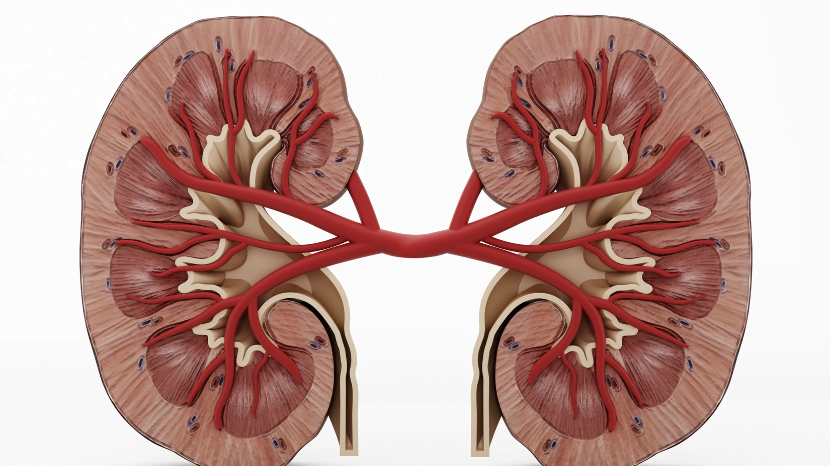
Fact 51: The Phenomenon of Blushing
Blushing is a unique human phenomenon where individuals exhibit a reddening of the face in response to emotional stimuli, such as embarrassment or happiness. This involuntary response is mediated by the sympathetic nervous system, which causes blood vessels in the face to dilate.
Fact 52: The Human Body’s Production of Heat
The human body constantly produces heat as a byproduct of metabolic processes. This heat production helps in maintaining our body temperature, which is essential for the optimal functioning of enzymes and cellular reactions.
Fact 53: The Role of the Lymphatic System
The lymphatic system, comprising a network of vessels and nodes, plays a crucial role in the immune response. It helps in the transportation of lymph, a fluid containing white blood cells that fight off infections, and aids in the removal of waste products from tissues.
Fact 54: The Complexity of the Human Eye’s Retina
The retina, located at the back of the eye, is a complex layer of cells that detect light and send signals to the brain to create visual images. It contains millions of photoreceptor cells, including rods for low-light vision and cones for color vision.
Fact 55: The Human Body’s Ability to Heal
The human body possesses a remarkable ability to heal itself. From the regeneration of skin cells to the repair of broken bones, the body’s innate healing mechanisms work tirelessly to restore health and maintain the integrity of our biological systems.
Fact 56: The Role of Melanin in Skin Pigmentation
Melanin is a pigment responsible for the coloration of the skin, hair, and eyes. It provides protection against harmful UV radiation from the sun, with individuals having darker skin tones possessing more melanin.
Fact 57: The Human Body’s Biological Clock
The suprachiasmatic nucleus, a group of cells in the brain, acts as the body’s biological clock, regulating circadian rhythms. This clock influences various physiological processes, including sleep-wake cycles and hormone release, helping to synchronize our body functions with the external environment.
Fact 58: The Role of the Thymus in Immune Development
The thymus, a gland located in the upper chest, plays a vital role in the development of the immune system, particularly during infancy and childhood. It is involved in the production and maturation of T-cells, a type of white blood cell that fights off infections.
Fact 59: The Human Body’s Sensitivity to Touch
The human body is highly sensitive to touch, with thousands of nerve endings present in the skin. This sensitivity allows us to perceive a wide range of tactile sensations, from the gentle caress of a breeze to the firm pressure of a handshake.
Fact 60: The Role of the Pancreas in Digestion and Hormone Regulation
The pancreas is a vital organ involved in both digestion and hormone regulation. It produces digestive enzymes that help in the breakdown of food and secretes insulin, a hormone that regulates blood sugar levels.
Fact 61: The Human Body’s Cellular Renewal
The human body is constantly undergoing cellular renewal, where old cells are replaced by new ones. This process helps maintain the health and functionality of various tissues and organs, showcasing the body’s dynamic nature.

Fact 62: The Role of the Pituitary Gland
Often referred to as the “master gland,” the pituitary gland secretes hormones that regulate various bodily functions, including growth, metabolism, and reproductive processes. It works in close coordination with the hypothalamus to maintain hormonal balance.
Fact 63: The Human Body’s Largest Organ: The Skin
The skin is the largest organ of the human body, with an average surface area of about 2 square meters. It serves as a protective barrier, shielding us from environmental hazards and helping to regulate body temperature.
Fact 64: The Complexity of the Human Ear
The human ear is a marvel of biological engineering, capable of detecting a wide range of sound frequencies. It consists of three parts: the outer ear, which collects sound waves; the middle ear, which amplifies the waves; and the inner ear, which converts the waves into electrical signals for the brain to interpret.
Fact 65: The Human Body’s Production of Dandruff
Dandruff is a common condition characterized by the shedding of dead skin cells from the scalp. While it can be influenced by various factors, including dry skin and fungal infections, regular shedding of skin cells is a natural process of skin renewal.
Fact 66: The Role of the Intestines in Nutrient Absorption
The intestines play a crucial role in nutrient absorption, with the small intestine being particularly adept at absorbing digested food molecules. Its inner lining, covered with tiny finger-like projections called villi, increases the surface area for efficient nutrient uptake.
Fact 67: The Human Body’s Ability to Sense Temperature
The human body possesses specialized nerve endings called thermoreceptors that can detect changes in temperature. These receptors send signals to the brain, helping us perceive the sensations of hot and cold and enabling the body to maintain a stable internal temperature.
Fact 68: The Role of the Gallbladder in Digestion
The gallbladder, a small organ located beneath the liver, stores bile produced by the liver. This bile is released into the small intestine during digestion, aiding in the breakdown and absorption of fats.
Fact 69: The Complexity of the Human Shoulder
The human shoulder is one of the most complex joints in the body, offering a wide range of motion. It consists of several joints and muscle groups working together, allowing us to perform movements like lifting, pulling, and rotating the arm.
Fact 70: The Human Body’s Production of Sebum
Sebum is a natural oil produced by the sebaceous glands in the skin. It helps to moisturize and protect the skin, preventing dryness and irritation. However, excessive sebum production can lead to oily skin and acne.
Fact 71: The Role of the Sclera in Eye Structure
The sclera, also known as the white of the eye, is a tough, fibrous tissue that covers most of the eye’s surface. It provides structural support and protection, helping to maintain the eye’s shape and safeguarding the delicate internal structures.
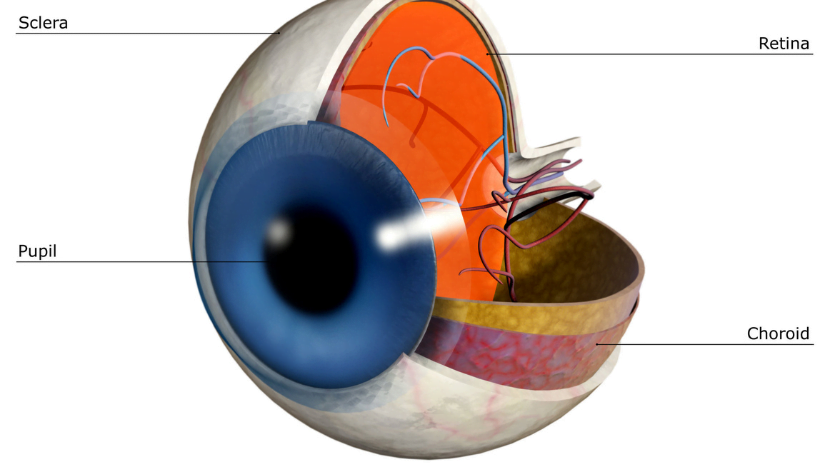
Fact 72: The Human Body’s Ability to Adapt to Physical Training
The human body has a remarkable ability to adapt to physical training. With regular exercise, various physiological changes occur, including increased muscle mass, improved cardiovascular function, and enhanced endurance, showcasing the body’s plasticity and resilience.
Fact 73: The Role of the Adrenal Glands in Stress Response
The adrenal glands, located atop the kidneys, play a vital role in the body’s stress response. They secrete hormones like cortisol and adrenaline, which prepare the body to respond to stressful situations, enhancing alertness and energy availability.
Fact 74: The Complexity of the Human Knee
The human knee is a complex joint that bears a significant amount of the body’s weight. It consists of bones, cartilage, ligaments, and tendons working together to provide stability and facilitate movements like bending and straightening.
Fact 75: The Human Body’s Ability to Produce Vitamin D
The human body has the ability to produce vitamin D when exposed to sunlight. This vitamin is essential for bone health, as it aids in the absorption of calcium, a mineral necessary for bone strength and density.
Fact 76: The Role of the Thyroid Gland in Metabolism
The thyroid gland, located in the neck, secretes hormones that regulate metabolism, influencing the body’s energy usage. It also plays a role in growth, development, and the functioning of various bodily systems.
Fact 77: The Human Body’s Production of Earwax
Earwax, or cerumen, is a natural substance produced by glands in the ear canal. It helps to protect the ear by trapping dust and other foreign particles, preventing them from reaching the eardrum. It also has antibacterial properties, helping to prevent infections.
Fact 78: The Role of the Diaphragm in Breathing
The diaphragm, a dome-shaped muscle located below the lungs, plays a crucial role in breathing. It contracts during inhalation, creating a vacuum that draws air into the lungs, and relaxes during exhalation, allowing air to be expelled.
Fact 79: The Human Body’s Ability to Sense Pain
The human body possesses a sophisticated pain-sensing system, with specialized nerve endings called nociceptors that detect harmful stimuli. This system helps protect the body by alerting us to potential injuries and prompting us to take corrective actions.
Fact 80: The Role of the Placenta in Fetal Development
During pregnancy, the placenta serves as a lifeline between the mother and the developing fetus. It facilitates the exchange of nutrients, oxygen, and waste products, ensuring the proper growth and development of the baby.
Fact 81: The Human Body’s Ability to Sweat
Sweating is a natural mechanism of the human body to regulate temperature. Through the process of perspiration, the body releases excess heat, helping to maintain a stable internal temperature, especially during physical activity or in hot environments.
Fact 82: The Role of the Prostate Gland
In males, the prostate gland plays a crucial role in the reproductive system. It produces a fluid that nourishes and protects sperm, facilitating their transportation during ejaculation.
Fact 83: The Complexity of the Human Nervous System
The human nervous system is a complex network of nerves and cells that transmit signals between different parts of the body and the brain. It is divided into the central nervous system, comprising the brain and spinal cord, and the peripheral nervous system, which connects the central nervous system to the rest of the body.
Fact 84: The Human Body’s Ability to Blush
Blushing is a unique human phenomenon where the face turns red due to an emotional response, such as embarrassment or excitement. This reaction is caused by the dilation of blood vessels in the face, increasing blood flow to the skin.
Fact 85: The Role of the Uterus in Reproduction
In females, the uterus plays a central role in reproduction. It is where the fertilized egg implants and develops into a fetus during pregnancy. The uterus also sheds its lining during the menstrual cycle if fertilization does not occur.
Fact 86: The Complexity of the Human Immune System
The human immune system is a complex defense mechanism that protects the body from infections and diseases. It comprises various components, including white blood cells, antibodies, and the complement system, working together to identify and neutralize harmful pathogens.
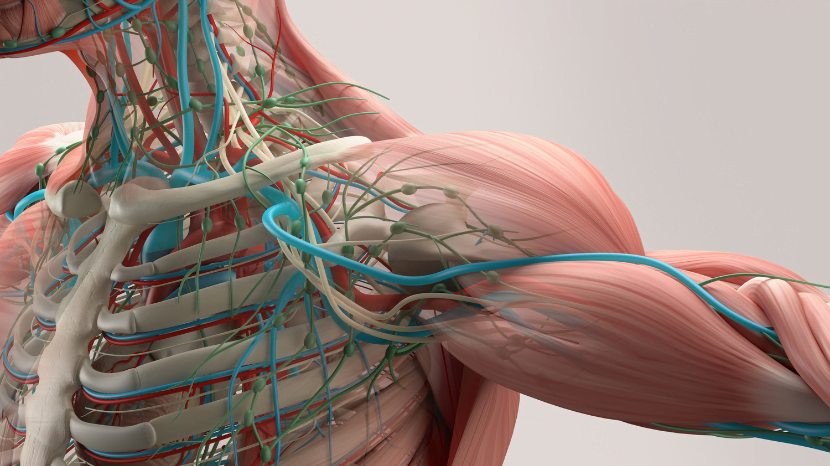
Fact 87: The Human Body’s Ability to Heal Bones
The human body has a remarkable ability to heal broken bones. Following a fracture, cells called osteoblasts build new bone tissue to bridge the gap, while osteoclasts remove damaged tissue, facilitating the healing process.
Fact 88: The Role of the Liver in Detoxification
The liver plays a vital role in detoxifying the body. It processes and neutralizes toxins, including alcohol and drugs, helping to protect the body from harmful substances and maintain overall health.
Fact 89: The Complexity of the Human Digestive System
The human digestive system is a complex series of organs that work together to break down food into nutrients that the body can use for energy, growth, and repair. This system includes the mouth, esophagus, stomach, intestines, liver, and pancreas.
Fact 90: The Human Body’s Ability to Produce Tears
The human body has the ability to produce tears, which serve various functions, including lubricating the eyes, aiding in vision, and providing a means to express emotions. Tears contain enzymes and antimicrobial proteins that help protect the eyes from infections.
Fact 91: The Role of the Spleen in Immune Function
The spleen, an organ located in the upper left part of the abdomen, plays a role in immune function. It filters the blood, removing old and damaged red blood cells, and helps the body fight off infections by producing white blood cells.
Fact 92: The Complexity of the Human Respiratory System
The human respiratory system is a complex series of organs and tissues that facilitate the exchange of oxygen and carbon dioxide between the body and the environment. This system includes the nose, trachea, lungs, and diaphragm.
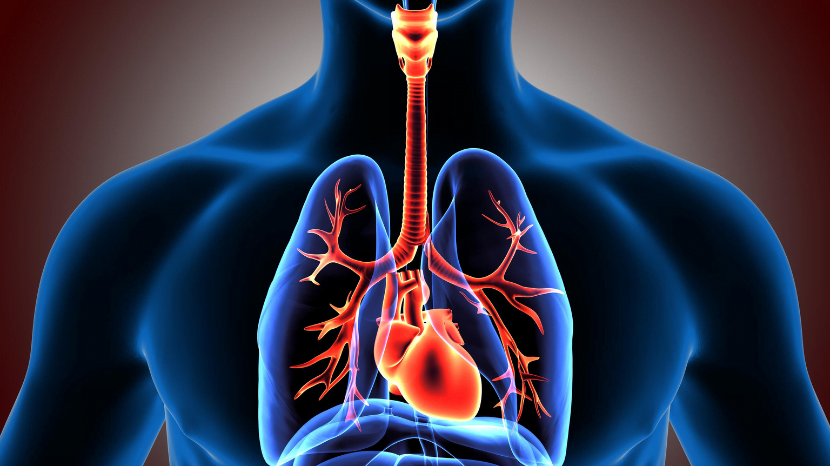
Fact 93: The Human Body’s Ability to Adapt to Different Environments
The human body has a remarkable ability to adapt to different environments. Through physiological and behavioral adaptations, humans can survive and thrive in a variety of climates, from the freezing polar regions to the scorching deserts.
Fact 94: The Role of the Kidneys in Fluid Balance
The kidneys play a vital role in maintaining fluid balance in the body. They filter the blood, removing waste products and excess substances, and regulate the volume and composition of body fluids, ensuring proper hydration and electrolyte balance.
Fact 95: The Complexity of the Human Muscular System
The human muscular system is a complex network of muscles that enable movement, maintain posture, and support various bodily functions. It comprises over 600 muscles, working in harmony to produce a wide range of motions and actions.
Fact 96: The Human Body’s Ability to Sense Pressure
The human body possesses specialized nerve endings called mechanoreceptors that can detect pressure and touch. These receptors send signals to the brain, allowing us to perceive tactile sensations and interact with our surroundings.
Fact 97: The Role of the Pineal Gland in Sleep Regulation
The pineal gland, a small endocrine gland in the brain, plays a role in sleep regulation. It produces the hormone melatonin, which helps regulate sleep-wake cycles, influencing when we feel sleepy and when we feel awake.
Fact 98: The Complexity of the Human Cardiovascular System
The human cardiovascular system is a complex network of the heart and blood vessels that circulate blood throughout the body. This system ensures the delivery of oxygen and nutrients to various tissues and the removal of waste products, maintaining overall health.
Fact 99: The Human Body’s Ability to Regenerate Skin
The human body has the ability to regenerate skin, a process that helps heal wounds and replace old, damaged cells with new, healthy ones. This regenerative capacity is vital for maintaining the integrity of the skin, our body’s protective barrier.
Fact 100: The Role of the Brain in Human Consciousness
The brain is the seat of human consciousness, responsible for our thoughts, emotions, and perceptions. It is a complex organ, comprising billions of neurons that form intricate networks, facilitating communication and coordination between various parts of the body and the external world.

